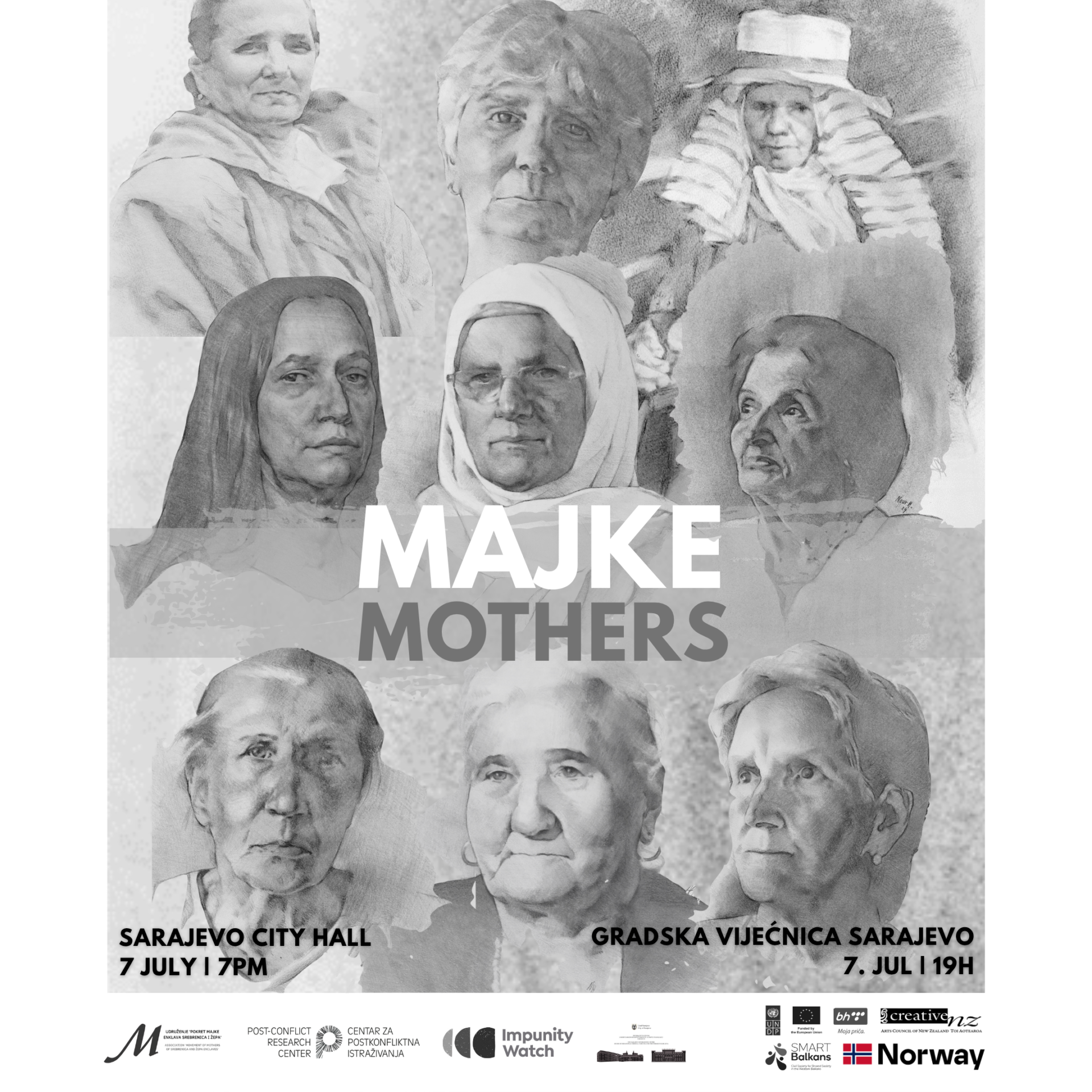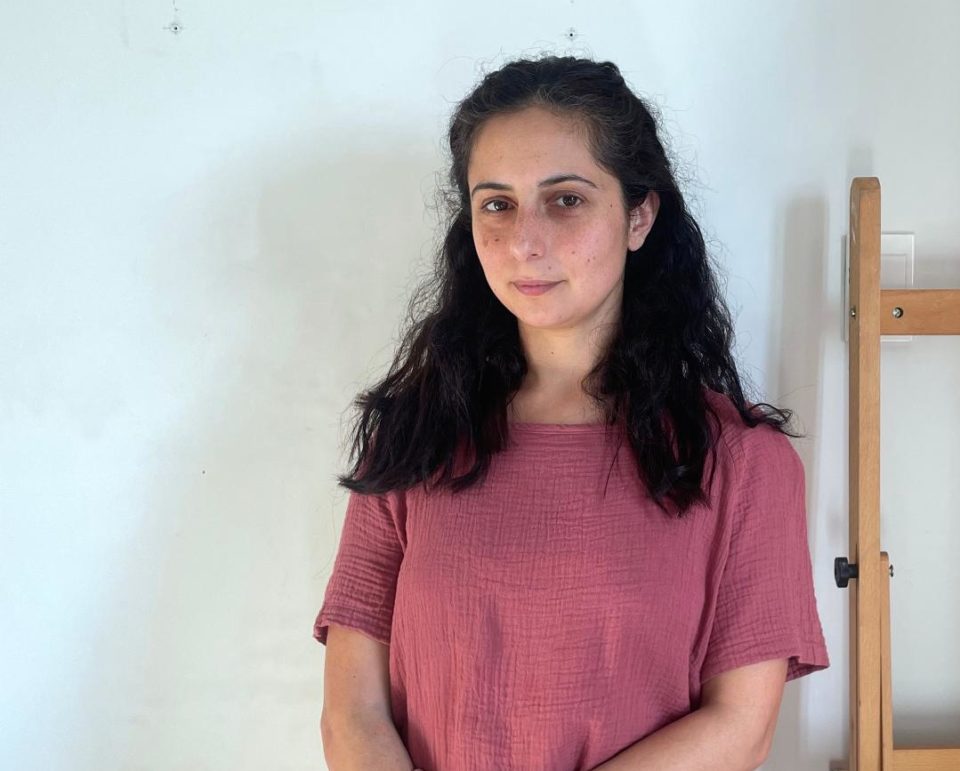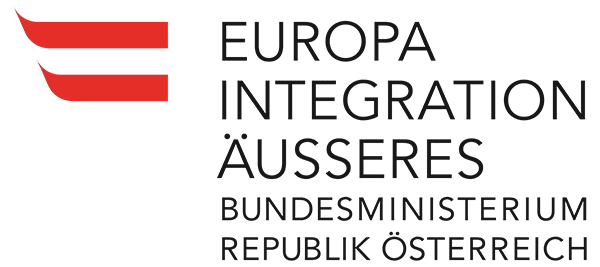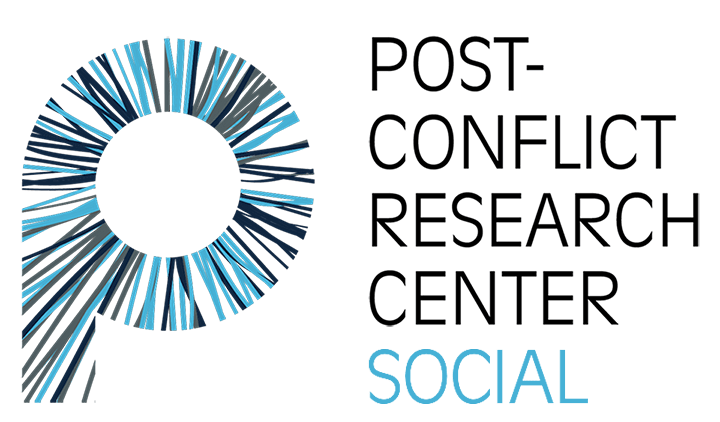
Thirty years after the Srebrenica genocide, the exhibition ‘Majke/Mothers,’ created by Nour Hassan and dedicated to the Mothers of Srebrenica, will open on July 7 at the Sarajevo City Hall. With this work, the artist from New Zealand aimed to capture a variety of emotions, preserve memory, and honour the Mothers of Srebrenica by sharing their authentic stories.
A picture is worth a thousand words and can thus convey a deeper story and a more thorough understanding of history. Such is the case in ‘Majke/Mothers,’ which features the portraits of 25 women who lost their loved ones during the genocide, and were themselves subjected to violence. The portrayed women are members of the association Movement of Mothers of Srebrenica and Žepa Enclaves, which, since its founding in 1996, has been bringing together victims’ relatives and genocide survivors. The Mothers’ main goals are to assist in the process of finding, exhuming, identifying, and burying the victims, as well as to organize a variety of commemorative activities to ensure the Srebrenica genocide is never forgotten.
The exhibition is one such project, jointly organized by the Mothers and the Post-Conflict Research Center (PCRC). The artist Nour Hassan passionately worked on the exhibition both in Bosnia and Herzegovina (BiH) during her 2022 internship at PCRC and remotely from Auckland, New Zealand. In a personal interview, Hassan reflects on the process of creating the portraits, her goals and emotional experience, the challenges she faced, what she learned through engaging with such a sensitive and powerful subject as genocide, and how her art deals with themes of memory, loss, and representation.

Hassan, of Iraqi heritage, was born in Kuwait and moved to New Zealand in 1996. She has always searched for ways to connect her artistic practice to people and adversity. Her academic background in Fine Arts and History helped guide her along a path of preserving memory and giving voice to those often left out of dominant historical narratives.
“In history, art is often used as source material, so I became more aware of its power in storytelling and preserving lived experience,” Hassan explains. She adds that the ‘Mothers’ project brought all these elements together with the goal of helping preserve these women’s stories and ensure they are never forgotten.
Hassan first heard about the Srebrenica genocide when she travelled to Sarajevo as a tourist in 2018, but her interest in BiH began even earlier, inspired by neighbors and classmates with roots in the former Yugoslavia. After returning to BiH for the internship at PCRC, she started working on the ‘Mothers’ project. She says that her stay in Sarajevo, her exchange with local artists, and the use of new exciting tools made the whole process feel more grounded in the local context, both socially and materially. After completing six portraits in Sarajevo, Hassan returned to New Zealand to work on the remaining portraits, noting that New Zealanders “were moved by the stories I told them about the Mothers and were excited to see that women were being commemorated.”
Given the gravity of the topic of Srebrenica, Hassan naturally wanted to maintain some emotional distance from the work and preferred to work from photos taken beforehand. Using these photo references was, in Hassan’s view, the most convenient way, considering that most of her work had to be completed overseas. Although the artist usually favors working in-person with the subjects of her portraits, she maintains that “it’s important to create a safe and respectful space, for both myself and the person I’m drawing.” She further explains that portraying a person can be an emotionally taxing process.
“My main goal in portraiture is to capture micro-expressions and for that I need to stay focused,” Hassan says. She further emphasizes that “many of the stories I read were already incredibly painful and that kind of emotional weight can be debilitating for me.” Additionally, the sheer number of portraits to be drawn was a challenge for Hassan, especially because sometimes it was hard to know when a drawing was actually finished.
“The bare minimum is that the portrait conveys a particular emotion— not just that it resembles the person. And capturing both the emotion and the physical features at once can be really difficult,” she explained.
Asked about her artwork’s connection to the themes of memory, loss, and representation, Hassan states that portraiture engages with all of these elements by default: “Taking an image of someone’s face, assigning an artist to draw them, framing that drawing, and placing it within a curated space alongside other works and written material—these are all acts of representation and remembrance.” The theme of loss, meanwhile, is reflected in the materials used for the portraits, namely charcoal and graphite, which need to be framed quickly because the particles lift easily from the surface of the paper. This unfixed nature of the material mirrors the fading and eventual loss of both memory and life itself. From her own childhood experience of frequently moving to new places, she says she developed a certain anxiety around losing things, and that these materials, with their impermanence and fragility, capture that feeling very well.
The artist sincerely hopes her work will encourage broader conversations about the war in BiH and the Srebrenica genocide, as well as other topics in BiH that she worries are overshadowed by the dominant discourses. She is open to debates as to whether portraiture is the right approach to this kind of memory work, and she hopes that her project will not only “serve to represent and remember these women, but that it will invite dialogue and encouragement for more work to be made”—work that might focus on more women and more stories.
This hope is connected to one of Hassan’s most important lessons from drawing the portraits: if you don’t put effort into remembrance and commemoration, these stories are at risk of being forgotten entirely. Moreover, being particularly motivated to confront the lack of commemoration of women’s wartime experiences—their contributions, their strength, and their kindness—Hassan strives to combine remembrance with an invitation for dialogue and a change in perspective, inspiring herself and others to conduct similar creative projects. For her, drawing the Mothers of Srebrenica has been a striking “reminder that memory isn’t automatic—it has to be actively preserved.”







Nada Bichel
Nour Hassan is very talented, Brilliant and seems that she has a great ambitions , her passion for painting is undeniable.
I wish her luck and success